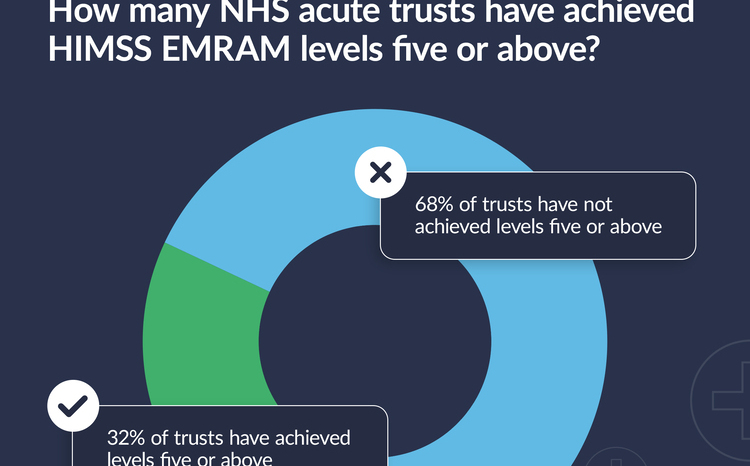Network chairs call for clearer framework on new digital maturity rating
- 1 September 2021

The chairs of the Digital Health Networks have welcomed the newly published ‘What Good Looks Like’ guidance but called for a clearer framework on assessing digital maturity.
The long-awaited guidance was published by NHSX yesterday (August 31) and sets out what digital success in NHS systems and organisations should look like.
Trusts and other NHS organisations will be assessed against the What Good Looks Like guidance to help “identify their gaps and prioritise areas for investment and improvement”, according to a statement from NHSX.
Dr James Reed, chair of the Digital Health CCIO Network, and Lisa Emery, chair of the Digital Health CIO Network, said the guidance had “landed well” with digital leaders but more detail was needed on how organisations would be assessed.
“I think the ask of the centre is that it’s landed well, now let’s seize the opportunity on how do we bring it to life?” Emery told Digital Health News.
“How do we make it something that is the way we do things and how are they going to be supporting us to do that?
“I’d like to see a roadmap for how we’re going to start seeing good come out of that. The Networks are keen to help shape these plans.”
Reed added: “They need to be more specific around the plans. There’s a clear impression around the idea of digital maturity assessments.
“It would be good to know from the centre what that’s going to look like.”
Upon launching the guidance NHSX CIO Sonia Patel told Digital Health News that the digital maturity assessments would be largely peer review assessments to act as a learning experience for the reviewee and those being reviewed.
Reed said there was widespread support for the idea of peer reviews but said organisations would need to understand the level of resources needed to conduct the reviews.
“If we’re expected to go to our neighbouring trust with a gang of people and assess them then that’s a significant piece of work,” he said.
“How are we going to do that? Are we just going to be told to go and review each other and report how it went?
“That’s fine up to a point but you need more structure around it if it’s really going to be robust and work well.”
Since the guidance was published Emery and Reed said they had been approached about it by members of their own organisation. They said it shows a clear appetite for improving digital services in the NHS.
They called on NHSX to work with the Digital Health Networks to help shape how the What Good Looks Like guidance can be expanded and adopted into NHS organisations.
What Good Looks Like guidance
The guidance aims to build on the strides seen in digital and data during the Covid-19 pandemic by providing local NHS leaders with digital success measures they should aim to meet.
Speaking exclusively to Digital Health News following the publication of the guidance Sonia Patel, chief information officer (CIO) at NHSX, said: “We want to ensure that we have ubiquitous digital and data transformation capability across the country and without a standard, we are likely to inherit lots of variation.
“The repercussions of variation could be at the consequence of delivering better patient care and better outcomes for the population, so therefore it is really important to provide a clear north star.”
The framework sets out seven success measures including whether digital transformation is well led; ensures smart foundations; safe practice; supports people; empowers citizens; improves care; and healthy populations.
It is split into two sections: ‘What does good look like for Integrated Care Systems (ICSs)’ and ‘What does good look like for your organisation’ which both follow the same seven measures of success.
Recommendations in the guidance include patients having digital access to their care plans and test results; a call for NHS trusts to explore new ways of delivering care using digital platforms such as remote monitoring; and the improvement of care through the use of electronic prescribing systems and decision support software.




